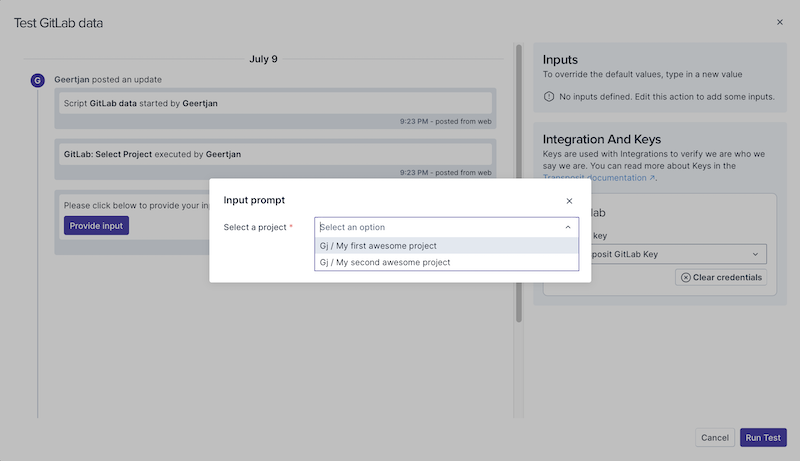Prerequisites
Create a GitLab account.
Create a GitLab personal access token and set its scope to read_api.
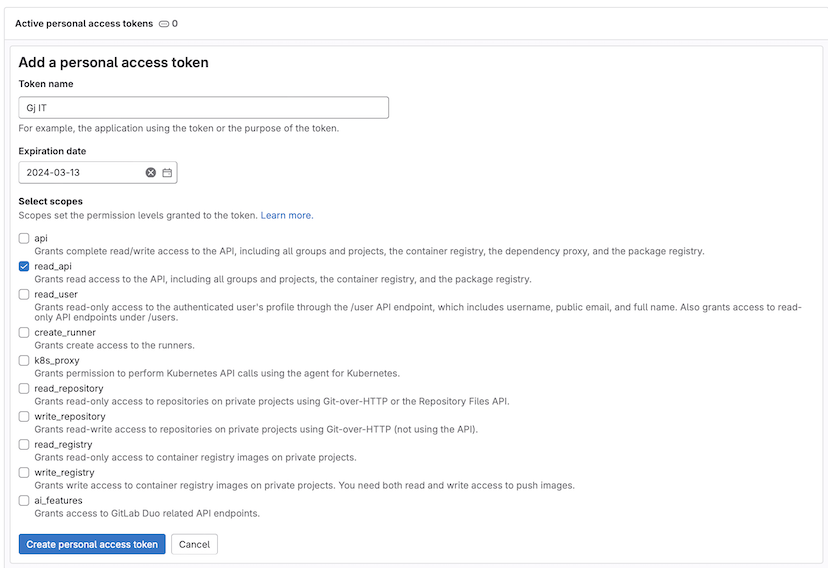
Available Actions
- Add Note to Issue - Adds a note to an issue in GitLab
- Create Issue - Creates a new issue in a GitLab project
- Create Merge Request Comment - Creates a new note for a single merge request
- Create Project Merge Request - Creates a merge request for a GitLab project
- List Merge Request Commits - Gets a list of merge request commits.
- List Project Issues - Gets a list of issues for a project
- List Project Merge Requests - Gets all merge requests for a project
- Select Project - Selects a project from GitLab where the authenticated user is a member or an owner
- Select Project Issue - Selects an issue from the queried GitLab project
- Select Project Merge Request - Selects a merge request from the queried GitLab project
Before working with individual actions, such as the above, go to the Explore Templates tab in the Automation Hub, and check if a template that suits your needs already exists.
Set Up the Integration
Let's get started pulling data from GitLab into Transposit.
Make sure you're logged into Transposit, then click this link to open the GitLab settings dialog, enter a name, and click Save.
In the Integrations list, where your key is now included, click Authenticate.
Follow the instructions in the dialog to get your private key.
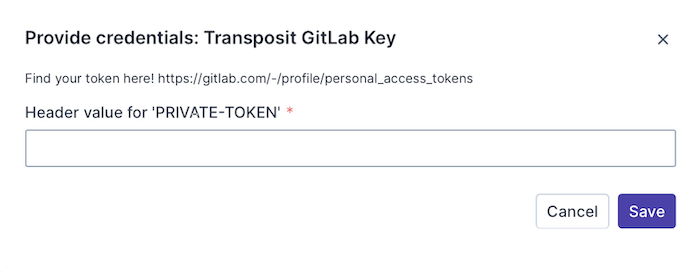
Useful links:
Enter the key received as described above and click Save.
GitLab is now enabled to interact with Transposit.
Use the Integration
Now that you've configured your integration, add one or more of the integration's actions to an automation, test the automation, and then add the automation to an incident type.
Add an Action. While creating your automations, when you search for GitLab actions, you see the following.
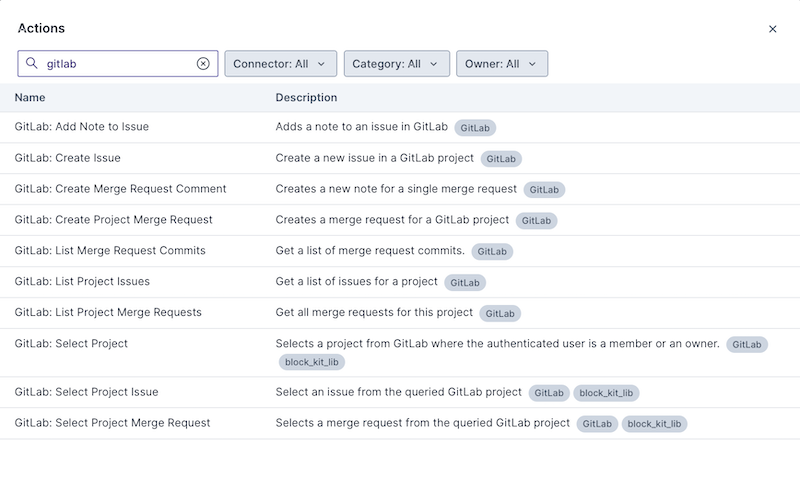
When you combine the GitLab actions, you can let Transposit provide the context for one action from another, as shown below.
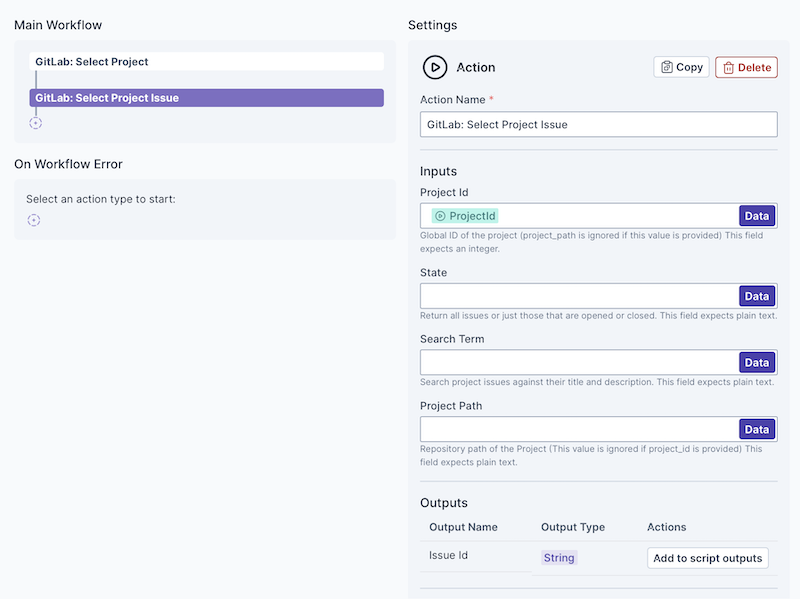
Test the Automation. For example, when you test the Select Project action, you see the following.
